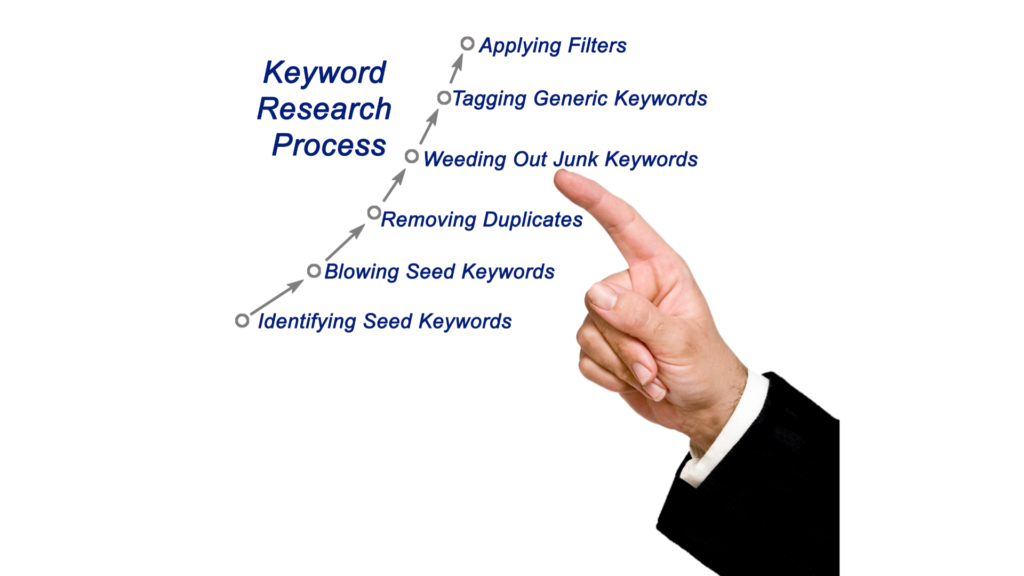You’ve likely heard of longtail keywords, but what are they exactly? In this article, we’ll give you a crash course on long tail keywords: what they are, why they’re important, and how to use them in your content marketing strategy.
What are longtail keywords?
If you’re new to SEO, you may have heard of the term “longtail keywords” but not be entirely sure what they are. Longtail keywords are longer, more specific phrases targeting a particular niche or audience. They’re called “longtail keywords” because they tend to be at the end of the spectrum, comprising many less common keywords.
While longtail keywords may not have the same search volume as more general keywords, they can be an important part of your SEO strategy. That’s because they allow you to target a specific audience with laser-like precision. And, since long tail keywords are less competitive than general keywords, they can be easier to rank for.
So, if you’re looking to get started with longtail keywords, here are a few tips:
1. Use keyword research tools like Google AdWords Keyword Planner and Google Trends to find long tail keywords relevant to your business.
2. Incorporate longtail keywords into your website content in a way that sounds natural and user-friendly. Don’t stuff your keywords in there just for the sake of it – that will only hurt your SEO efforts.
How to find long tail keywords

One of the best ways to find longtail keywords is to use a keyword research tool. Several keyword research tools are available, but our favorite is Google Keyword Planner.
To use Google Keyword Planner, head to Google AdWords and sign up for an account. Once signed in, click “Tools” and “Keyword Planner.”
Next, enter a seed keyword into the “Your product or service” field and click “Get Ideas.”
Google Keyword Planner will now show you a list of related keywords and some data on each keyword. The two pieces of data we pay attention to are the “Average. monthly searches” and the “Competition.”
The “Avg. monthly searches” column tells us how many people search for that keyword monthly. The higher the number, the more traffic we expect from that keyword.
The “Competition” column tells us how difficult it will be to rank for that keyword. The higher the competition, the more effort we need to put in to rank for that keyword.
We want to find keywords with high monthly search volume and low competition when looking for longtail keywords. These keywords are most likely to drive traffic to our website.
Longtail Keywords research goes great with some of our other research articles!
Affiliate Marketing Keywords: 8 HOT Tips
Why you should use long tail keywords

If you’re unfamiliar with the term, “longtail keywords” are longer, more specific phrases targeting a particular audience or market. For example, instead of just using “shoes,” a long tail keyword might be “women’s size seven running shoes.”
Why use longtail keywords? There are a few reasons:
1. Longtail keywords are usually less competitive than shorter, more general keywords. This means it can be easier to rank for long tail keywords.
2. Longtail keywords tend to be more specific, which can result in higher-quality traffic. When searching for a specific product or service, they are more likely to convert into a paying customer than someone just browsing.
3. Longtail keywords can help you to target a specific niche market. You can better tailor your product or service to their needs by targeting a smaller group.
If you want to drive more traffic and sales to your website, consider using longtail keywords in your marketing efforts.
How to use long tail keywords
If you’re new to SEO, you may have heard of “longtail keywords” but aren’t quite sure what they are or how to use them. Longtail keywords are longer, more specific ones related to your product or service. They are usually 3-5 words long and are much more targeted than general, short-tail keywords.
Why Use Longtail Keywords?
Longtail keywords are essential for a couple of reasons. First, they help you target a very specific audience. When someone types in a longtail keyword, they usually have a specific problem or question they want answered. Using longtail keywords ensures that your content is coming up in search results for people interested in what you have to say.
Second, longtail keywords tend to convert better than short-tail keywords. People who use longtail keywords are already further along in the buying cycle and know exactly what they want. They’re not just casually browsing; they’re ready to purchase. You’ll likely make a sale if you can get your content in front of these ready-to-buy customers.
Long tail keyword examples
Long tail keywords can be a great way to attract traffic to your blog. Here are some examples of longtail keywords that you can use:
-How to make money with a blog
-How to start a blog
-How to get more traffic to your blog
-How to make your blog more popular
-How to get more people to read your blog
Conclusion
In conclusion, longtail keywords are an important part of SEO and should not be ignored. You can rank higher in search engines and reach a more targeted audience by targeting these keywords. While they may take a little longer to research and target, the effort will be worth it.
